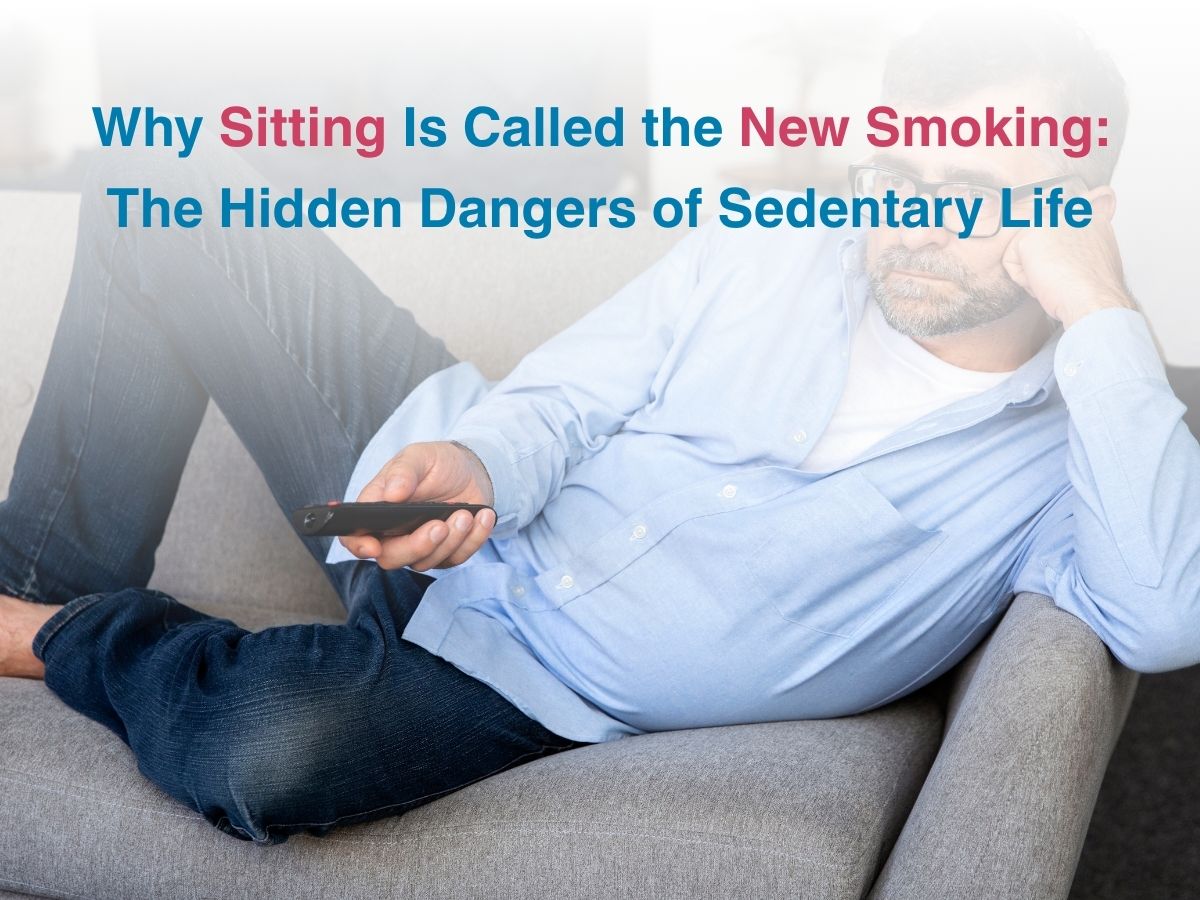
Why Sitting Is Called the New Smoking: The Hidden Dangers of Sedentary Life

India is quickly emerging as a capital for metabolic disorders and heart disease and this can be attributed to a few well known factors- like a sedentary lifestyle, not making good dietary choices, not exercising enough, with increasing exposure to stress of different kinds, respectively. When you add sitting in one spot for 8-10 hours, without any change in posture or general activity, your health greatly suffers. We Indians tend to work long hours and with the pandemic leaving an indelible mark on our psyche, working from home for even longer than usual has become the norm. Sitting for long negatively impacts your body in several ways.
Why Sitting Is The New Smoking
Studies have shown that your risk of developing heart disease is much higher if you spend a lot of time sitting in one place. It is not only the heart that you should be worried about. Metabolic function also gets affected- and factors like abdominal obesity, high blood pressure and blood glucose levels, come into play here. Sitting can also cause clots to form in your blood vessels and your bones to weaken, though the exact mechanisms have not been studied in detail yet. Most of us think that getting an hour of exercise or going for a long walk is more than enough to compensate for long hours of sitting or being still. Studies have also said that working for an hour while sitting in one spot is like smoking a couple cigarettes. That is why, researchers prefer to say that sitting is the new smoking these days. Both smoking and sitting cause your bones to degenerate- especially those of the spine. Poor posture can also contribute to rapid bone loss or increased wear and tear.
How To Reduce Sitting Time Daily
With remote work becoming a norm for many employees, individuals also mention that people were not eating or sleeping on time. Nor were they maintaining good posture while working. Most admitted to sitting on a sofa or a bed to work, which by itself is alarming. Since working out for some time but sitting in one place and working for hours together will still not save you, it is time you learn how to get moving, during the day. These are some practical tips for you to consider-
Think of exercise or physical activity as being a fluid entity- where you don’t just walk for an hour totally and then forget about moving from your spot for the rest of the day. Divide the 60 minutes into 4-5 10 minute breaks- where you go for a stroll in the premises, climb stairs instead of using an elevator to get you up or down, not watching more than one episode in one sitting and opting for public transport options, if feasible. These will allow you to walk to and from different points and will add to your daily steps.
This change may not seem significant, but when clubbed with 45-60 minutes of daily moderate exercise, it can greatly increase your chances of having a healthier heart and better metabolism.
Exercises To Counter Sitting All Day
Stretches, squats, lunges and planks are excellent – so hip flexor stretches, chest openers and seated spinal twists can help relieve stiffness and improve flexibility and posture too, in the long run. The cat cow stretch is an excellent option for your whole spine and can help relieve some major tension from your back and shoulders.
Conclusion
Sitting for long hours can have the same effect as smoking a pack of cigarettes every day. Making strategic changes to your daily routine- where you don’t spend more than an hour or two at the same spot, can greatly help. Even getting up, stretching and going for a drink of water can help on very hectic work days. It is also good for your eyes and can help reduce strain over all. With improved health and metabolism, you can expect to live longer and lead a healthier life too.






